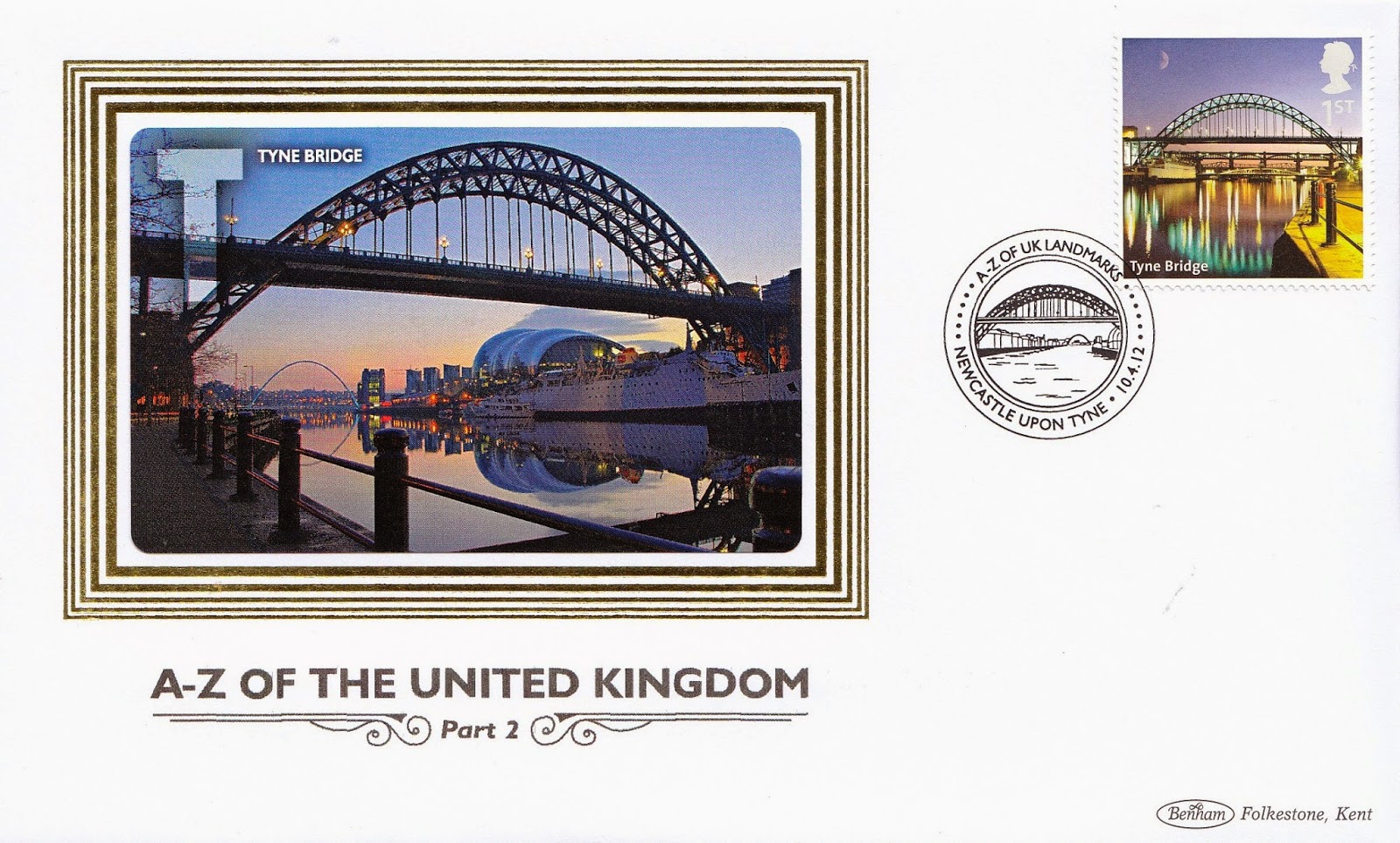A – Z OF THE UNITED KINGDOM
T
is for Tyne Bridge
England
Today we travel to Tyneside
To
Tyne Bridge, Newcastle
 |
|
Tyne Bridge viewed
from the Newcastle side. The Sage is the
building behind the bridge.
The ship
beneath the bridge is the permanently moored Tuxedo Princess floating nightclub
(the former car ferry TSS Caledonian Prince). The central pier of the Swing Bridge is also visible in the river, to the right.
|
The Tyne Bridge is a through arch bridge over the
River Tyne in North East England. It links Newcastle upon Tyne and Gateshead. It
was designed by the engineering firm Mott, Hay and Anderson, who later designed
the Forth Road Bridge, and was built by Dorman Lond and Co. of Middlesbrough.
It
is ranked as the tenth tallest structure in the city and was officially opened
on 10th October 1928 by King George V and has since become a
defining symbol of Tyneside. |
|
Tyne Bridge Construction 1928
Wikimedia
Commons |
 |
|
The 1781 stone bridge, with the High
Level Bridge in the background, from an 1861 illustration
|
The Romans built the earliest bridge across the Tyne near the location of
the present Tyne Bridge around 122 but it fell into disrepair.
In 1279 a stone bridge was constructed but after 500 years was destroyed in
the great flood of 1771.
In 1781 a new stone bridge across the Tyne was completed. Increased shipping
activity led to the stone bridge being removed in 1866 to make way for the
construction of the present Swing Bridge which opened in 1876.
The idea for the location of the present Tyne Bridge dates from 1864 when
there was concern about the cost of the tolls on the High Level Bridge. Over the next three decades various
committees met and discussed proposals and in early 1920’s with the chance of
securing central government funding they commenced in earnest.
29th April 1924 Newcastle and Gateshead approved the plans and
the Newcastle upon Tyne and Gateshead (Corporations) Bridge Act was passed on 7th
August 1924.
Dorman Long acted as the building contractors and work started with the
design from Mott, Hay and Anderson who based their design on Hell Gate Bridge
in New York City (1916).
The bridge’s towers were built from Cornish granite and were designed as
warehouses with five storeys but the inner floors were not completed and
therefore the storage areas were never used, lifts for passengers and goods
were also built for access to the quayside but are no longer in use.
 |
|
Tyne Bridge viewed from Side, Newcastle Quayside
|
Tram
lines were built in to the Tyne Bridge structure and were ready for immediate
use after the opening ceremony in October 1928.
 |
|
October 10, 1928 and it was time
to celebrate the completion and official opening of the Tyne Bridge. Here we
see the Royal entourage of King George V and Queen Mary approaching the bridge.
http://rememberwhen.gazettelive.co.uk
|
The bridge was officially opened on October 10, 1928 by King George V
and Queen Mary who were the first to use the roadway by crossing the bridge in
their horse drawn Ascot Landau. It certainly was a grand occasion and the
crowds turned out to wave the royal couple across the bridge.
 |
|
A dramatic photograph of the
Royal procession as it is about to complete the first official crossing of the
Tyne Bridge
|
Tram car No. 289 was the last Newcastle tram to run in to Gateshead over the Tyne Bridge on Sunday 5th March 1950. The tram lines were subsequently removed but some vestiges of these remain such as the redundant fixings for overhead power lines.
 |
|
A remarkable colour photograph of a
tram trundling across the Tyne Bridge, sometime before 1950. Photograph
courtesy of Gordon Richards
|
The Tyne Bridge is probably most recognised for the Great North Run, as 52,000 runners pass over the bridge accompanied by a display from the Red Arrows.
 |
|
http://rememberwhen.gazettelive.co.uk
|
In 2012, the largest Olympic
rings in the UK were erected on the bridge. The rings were manufactured by
commercial signage specialists Signmaster ED Ltd of Kelso. The rings were over
25 metres wide and 12 metres tall and weighed in excess of 4000 kg. This
was in preparation for Newcastle hosting the Olympic football tournament, and
the Olympic torch relay, in which Bear Grylls zipwired from the top of the
arch, to Gateshead quayside.
 |
Look
at all these people, ma
Will
we be able to find da?
Such
a crush and a crowd
So
much noise, everything is so loud
Da
is running for charity to make us proud
The
Red Arrows fly past
Roaring
jet engines force them fast
Over
the bridge over the Tyne river
Rattling
our bones and making our teeth shiver
We
see him loping along now
Plodding
along like a slow cow
His
energy is nearly spent
He
lets out a whoop in a Geordie accent.




Interesting - wonder if there's anything left of the ancient bridges?
ReplyDeleteCute poem. I love that the bridge has so much history. That's really neat.
ReplyDeleteWhat a beautiful bridge. It's history makes it even more intriguing. Thanks again for the lesson and pictures.
ReplyDelete